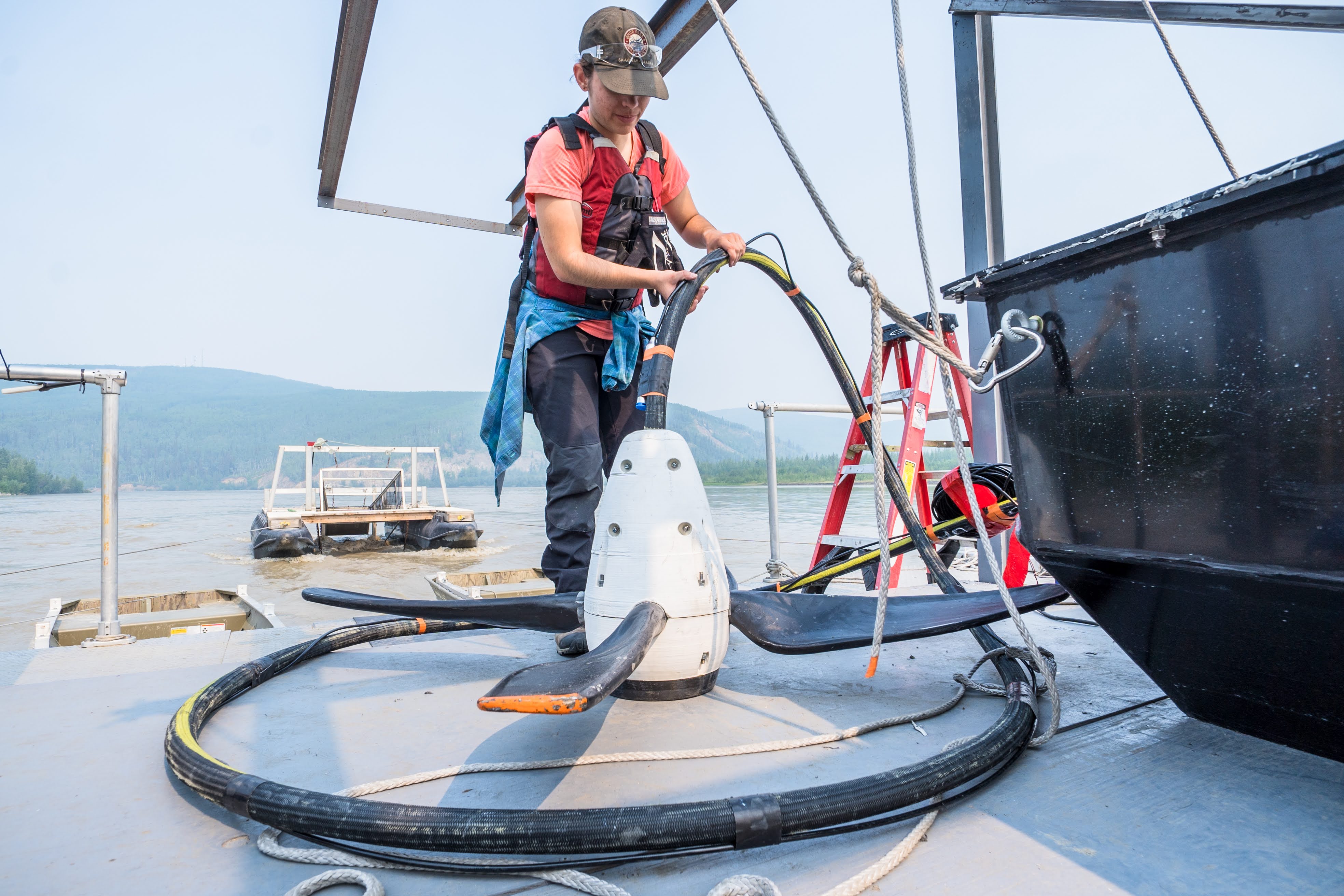Insights From the River — BladeRunner Hydrokinetic Field Testing

eveloping a new energy device prototype is one step in the innovation process. Testing that device in real-world conditions and using the data collected to refine the system is a major step in moving the device toward commercialization. That’s what happened last year at ACEP’s Tanana River Test Site near Nenana, Alaska.
ACEP’s hydrokinetics team, along with turbine developer BladeRunner Energy, successfully completed the second season of testing the turbine rotor prototype. The work is funded by the U.S. Department of Energy Advanced Research Projects Agency’s Submarine Hydrokinetic and Riverine Kilo-megawatt Systems program. This year’s testing yielded new information and insights, helping the team move closer to designing the most economical and efficient hydrokinetic system for deployment in remote riverine communities.
Watch this short video on this innovative hydrokinetic energy device and the testing carried out in 2022.
In 2022 the team successfully completed two one-week campaigns where they tested the latest iteration of the BladeRunner turbine rotor system. During the deployment campaigns, different blade designs — both curved and straight — were tested to observe how blade design affects power efficiency and debris deflection. Other system upgrades included an updated generator housing design and a new torsional cable.
This was the first year that the test site team had the entire work window to conduct instream testing on the device. In 2021, they had a shorter-than-expected testing window due to the grant award schedule. Even with a shorter testing window, the team was still able to test, build and design a turbine system that they deployed in September of 2021.
One of the challenges the team faced during testing in 2022 was getting the rotor to sink after being deployed from the barge. A rotor that sinks too far is inefficient, but, as it turns out, a rotor that will operate efficiently is extremely difficult to submerge initially.
So, ideally, the rotor system would be released underwater from shore and would swing into the current. During the second week of testing, the team was able to collect high-quality data using such a shore-based deployment. A 40-foot swing-arm with a winch for adjusting rotor position was secured and stabilized to the riverbank and pivoted out when in use. This design is easier and safer to operate, compared to an anchored mid-channel barge system.
“For a real-life deployment, a shore-based system where the rotor is already submerged and easily accessible for maintenance and operation is the goal,” said Ben Loeffler, Pacific Marine Energy Center co-director. “It is not cost-effective to have the system on a barge in the middle of the river attached to a mooring where someone needs to drive a skiff out to it all the time; however, the barge does allow for a controlled and stable testing location with consistent river velocities, which is ideal for research purposes.”
For the 2023 season, the team is anticipating two more one-week testing campaigns at the test site and will continue testing from both the barge and from shore. In addition to testing new blade iterations and system designs, the team will also explore how they can safely demonstrate the system for longer durations of time. As of now, the rotor has only run continuously for several hours at a time.
“Pragmatically, hydrokinetics is a good technology to act as an offset to diesel for remote riverine communities, but no one has cracked the code on the most economical approach,” said Loeffler. “It’s exciting to be a part of the ‘rush’ to develop the technology so that it is scalable both here in Alaska and around the world.”
This work is funded in part by the ARPA-E under Award Number DE-AR0001444.
For more information on this innovation and testing, please contact Loeffler at bhloeffler@alaska.edu.


